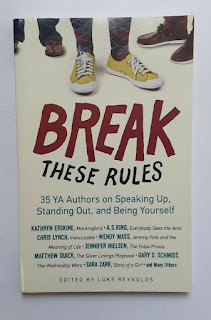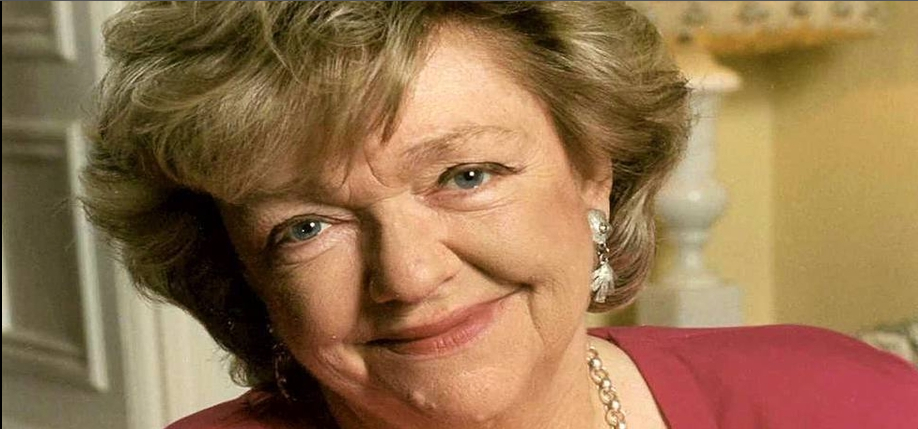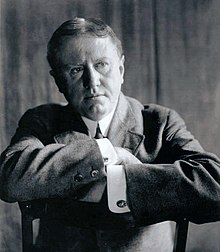Middle grades and young adult authors speak candidly on the unspoken “rules” of adolescence in this collection of moving, inspiring, and often funny essays. This unique volume encourages readers to break with conformity and defy age-old, and typically inaccurate, orthodoxy—including such conventions as Boys can’t be gentle, kind, or caring; One must wear Abercrombie & Fitch in order to fit in; Girls should act like girls; and One must go to college after finishing high school. With contributions from acclaimed, bestselling, and award-winning young adult authors—including Gary D. Schmidt, author of The Wednesday Wars; Matthew Quick, author of The Silver Linings Playbook; Sara Zarr, author of Story of a Girl; and Wendy Mass, author of A Mango-Shaped Space—this collection encourages individuality by breaking traditionally held norms, making it an ideal resource for tweens and teens.
Norba Short Story Club
domingo, 14 de noviembre de 2021
20. BREAK THESE RULES
Middle grades and young adult authors speak candidly on the unspoken “rules” of adolescence in this collection of moving, inspiring, and often funny essays. This unique volume encourages readers to break with conformity and defy age-old, and typically inaccurate, orthodoxy—including such conventions as Boys can’t be gentle, kind, or caring; One must wear Abercrombie & Fitch in order to fit in; Girls should act like girls; and One must go to college after finishing high school. With contributions from acclaimed, bestselling, and award-winning young adult authors—including Gary D. Schmidt, author of The Wednesday Wars; Matthew Quick, author of The Silver Linings Playbook; Sara Zarr, author of Story of a Girl; and Wendy Mass, author of A Mango-Shaped Space—this collection encourages individuality by breaking traditionally held norms, making it an ideal resource for tweens and teens.
martes, 25 de junio de 2019
STORY 19: "THE SCHOOL" BY DONALD BARTHELME
Donald Barthelme (April 7, 1931 – July 23, 1989) was an American short story writer and novelist known for his playful, postmdenist style of short fiction. Barthelme also worked as a newspaper reporter for the Houston Post, was managing editor of Location magazine, director of the Contemporary Arts Museum in Houston (1961–1962), co-founder of Fiction (with Mark Mirsky and the assistance of Max and Marianne Frisch), and a professor at various universities. He also was one of the original founders of the University of Houston Creative Writing Program.
(https://en.wikipedia.org/wiki/Donald_Barthelme)
The story achieves much of its humor through escalation. It begins with an ordinary situation everyone can recognize – a failed classroom gardening project. But then it piles on so many other recognizable classroom failures that the sheer accumulation becomes preposterous.
(https://www.thoughtco.com/analysis-the-school-by-donald-barthelme-2990474)
(https://en.wikipedia.org/wiki/Donald_Barthelme)
"The School" was originally published in 1974 in The New Yorker, where it is available to subscribers. You can also get a free copy of the story at National Public Radio (NPR).
Barthelme's story is short—only about 1,200 words—and really funny and darkly funny, so it's worth reading on your own.
The story achieves much of its humor through escalation. It begins with an ordinary situation everyone can recognize – a failed classroom gardening project. But then it piles on so many other recognizable classroom failures that the sheer accumulation becomes preposterous.
(https://www.thoughtco.com/analysis-the-school-by-donald-barthelme-2990474)
lunes, 17 de diciembre de 2018
STORY 18. "A WEEK IN SUMMER" BY MAEVE BINCHY
Maeve Binchy (1940-2012) was born in Dublin, worked as a school teacher, Irish Times columnist, and then as a novelist. Her books, which have been translated into over forty languages, have been adapted for stage, film and television. A feature film of her novel ‘Tara Road’ was released in 2005. She lived in Dalkey, Co Dublin, with her husband, the writer Gordon Snell.
Maeve attended the Merriman Summer School since 1968. ‘A Week in Summer’ is a short story commissioned by the Merriman Summer School as part of the bi-centenary celebrations marking Brian Merriman’s life and work in 2005, 200 years after his death. Maeve Binchy’s short story, which she read aloud, is about an American couple who came to Lisdoonvarna looking for peace and hoping for a chance to rejuvenate their marriage. They are plunged into the world of the Midnight Court and, even more importantly, of the hundreds who attend the Merriman Summer School regularily.They find plenty to admire and entertain and eventually something to change their lives.
domingo, 21 de octubre de 2018
STORY 17: "FIRST CONFESSION" BY FRANK O'CONNOR
Frank O’Connor, pseudonym of Michael O’Donovan, (born 1903, Cork,
County Cork, Ireland—died March 10, 1966, Dublin), Irish playwright,
novelist, and short-story writer who, as a critic and as a translator of
Gaelic works from the 9th to the 20th century, served as an interpreter
of Irish life and literature to the English-speaking world.
Raised in poverty, a childhood he recounted in An Only Child (1961), O’Connor received little formal education before going to work as a librarian in Cork and later in Dublin. As a young man, he was briefly imprisoned for his activities with the Irish Republican Army. O’Connor served as a director of the Abbey Theatre, Dublin, in the 1930s, collaborating on many of its productions. During World War II he was a broadcaster for the British Ministry of Information in London. He won popularity in the United States for his short stories, which appeared in The New Yorker magazine from 1945 to 1961, and he was a visiting professor at several American universities in the 1950s.
(https://www.britannica.com/biography/Frank-OConnor)
In First Confession by Frank O’Connor we have the theme of conflict,
appearance, division, connection, fear, innocence and honesty. Taken
from his Collected Stories collection the story is a memory piece and is
narrated in the first person by a man called Jackie. What is
interesting about the beginning of the story is that O’Connor may be
exploring the theme of conflict and appearance.
(http://sittingbee.com/first-confession-frank-oconnor/)
sábado, 3 de marzo de 2018
STORY 16: "THE DEVOTED FRIEND" BY OSCAR WILDE
"The Devoted Friend" is a darkly comic short story for children by the Irish author Oscar Wilde. It was first published in 1888 in the anthology The Happy Prince and Other Tales, which also includes "The Nightingale and the Rose", "The Selfish Giant" and "The Remarkable Rocket".

The two main characters in "The Devoted Friend" are a poor man known as little Hans and a rich Miller. The Miller claims to be a devoted friend of little Hans. In
truth, he selfishly takes advantage of little Hans at every opportunity.
Little Hans always does everything that the Miller asks him to do
because he does not want to lose the Miller's friendship or offend him.
Little Hans' desire to remain the Miller's friend ultimately proves
fatal for him.
lunes, 4 de diciembre de 2017
STORY 15: "THE GIFT OF THE MAGI" BY O. HENRY
(Many thanks to our assistant teacher Camilo Montoya for suggesting this story, perfect for Christmas.)
William Sydney Porter (September 11, 1862 – June 5, 1910), known by his pen name O. Henry, was an American short story writer. His stories are known for their surprise endings.
William Sydney Porter (September 11, 1862 – June 5, 1910), known by his pen name O. Henry, was an American short story writer. His stories are known for their surprise endings.
Porter's most prolific writing period started in 1902, when he moved to
New York City to be near his publishers. While there, he wrote 381 short
stories. He wrote a story a week for over a year for the New York World Sunday Magazine. His wit, characterization, and plot twists were adored by his readers but often panned by critics.
O. Henry's stories frequently have surprise endings. His stories are also known for witty
narration.
Most of O. Henry's stories are set in his own time, the early 20th
century. Many take place in New York City and deal for the most part
with ordinary people: policemen, waitresses, etc.
O. Henry's work is wide-ranging, and his characters can be found
roaming the cattle-lands of Texas, exploring the art of the con-man, or
investigating the tensions of class and wealth in turn-of-the-century
New York. O. Henry had an inimitable hand for isolating some element of
society and describing it with an incredible economy and grace of
language. Some of his best and least-known work is contained in Cabbages and Kings,
a series of stories each of which explores some individual aspect of
life in a paralytically sleepy Central American town, while advancing
some aspect of the larger plot and relating back one to another.
Among his most famous stories is "The Gift of the Magi" we have chosen, and also:
- "The Ransom of Red Chief", in which two men kidnap a boy of ten. The boy turns out to be so bratty and obnoxious that the desperate men ultimately pay the boy's father $250 to take him back.
- "The Cop and the Anthem" about a New York City hobo named Soapy, who sets out to get arrested so that he can be a guest of the city jail instead of sleeping out in the cold winter. Despite efforts at petty theft, vandalism, disorderly conduct, and "mashing" with a young prostitute, Soapy fails to draw the attention of the police. Disconsolate, he pauses in front of a church, where an organ anthem inspires him to clean up his life—and is ironically charged for loitering and sentenced to three months in prison.
- "A Retrieved Reformation", which tells the tale of safecracker Jimmy Valentine, recently freed from prison. He goes to a town bank to case it before he robs it. As he walks to the door, he catches the eye of the banker's beautiful daughter. They immediately fall in love and Valentine decides to give up his criminal career. He moves into the town, taking up the identity of Ralph Spencer, a shoemaker. Just as he is about to leave to deliver his specialized tools to an old associate, a lawman who recognizes him arrives at the bank. Jimmy and his fiancée and her family are at the bank, inspecting a new safe when a child accidentally gets locked inside the airtight vault. Knowing it will seal his fate, Valentine opens the safe to rescue the child. However, much to Valentine's surprise, the lawman denies recognizing him and lets him go.
- "The Duplicity of Hargraves". A short story about a nearly destitute father and daughter's trip to Washington, D.C.
- "The Caballero's Way", in which Porter's most famous character, the Cisco Kid, is introduced. It was first published in 1907 in the July issue of Everybody's Magazine and collected in the book Heart of the West that same year. In later film and TV depictions, the Kid would be portrayed as a dashing adventurer, perhaps skirting the edges of the law, but primarily on the side of the angels. In the original short story, the only story by Porter to feature the character, the Kid is a murderous, ruthless border desperado, whose trail is dogged by a heroic Texas Ranger. The twist ending is, unusually for Porter, tragic.
"The Gift of the Magi" is a short story about a young married couple and how they
deal with the challenge of buying secret Christmas gifts for each other
with very little money. As a sentimental story with a moral lesson about
gift-giving, it has been a popular one for adaptation, especially for
presentation at Christmas time. The plot and its twist ending are well-known, and the ending is generally considered an example of comic irony. It was allegedly written at Pete's Tavern[2] on Irving Place in New York City.
The story was initially published in The New York Sunday World under the title "Gifts of the Magi" on December 10, 1905. It was first published in book form in the O. Henry Anthology The Four Million in April 1906.
(https://en.wikipedia.org/wiki/O._Henry)
jueves, 12 de octubre de 2017
STORY 14. "HAPPY ENDINGS" BY MARGARET ATWOOD
Margaret Eleanor Atwood, (born November 18, 1939) is a Canadian poet, novelist, literary critic, essayist, inventor, and environmental activist. She is a winner of the Arthur C. Clarke Award and Prince of Asturias Award for Literature. She has been shortlisted for the Booker Prize five times, winning once, and has been a finalist for the Governor General's Award several times, winning twice. In 2001, she was inducted into Canada's Walk of Fame. She is also a founder of the Writers' Trust of Canada, a non-profit literary organization that seeks to encourage Canada's writing community. Among innumerable contributions to Canadian literature, she was a founding trustee of the Griffin Poetry Prize.
She is seen as one of the world’s leading women novelists, for some the best of them all; she has written poetry, novels, criticism and short stories; she campaigns for human rights and for the environment.
Nonetheless, across the years, certain themes, concerns and ways of writing recur. Amongst other things, Atwood writes about art and its creation, the dangers of ideology, and sexual politics; she deconstructs myths, fairytales and the classics for a new audience.
"Happy Endings" was first published in a 1983 Canadian collection, Murder in the Dark.[1]
https://en.wikipedia.org/wiki/Margaret_Atwood
"Happy Endings" is an example of metafiction. That is, it's a story that comments on the conventions of storytelling and draws attention to itself as a story. At approximately 1,300 words, it's also an example of flash fiction. "Happy Endings" was first published in 1983.
The story is actually six stories in one. Atwood begins by introducing the two main characters, John and Mary, and then offers six different versions -- labeled A through F -- of who they are and what might happen to them.
https://www.thoughtco.com/margaret-atwoods-happy-endings-analysis-2990463
Suscribirse a:
Comentarios (Atom)








/motorcycle-by-Craig-Sunter-Thanks-a-Million--56a869353df78cf7729dffeb.jpg)